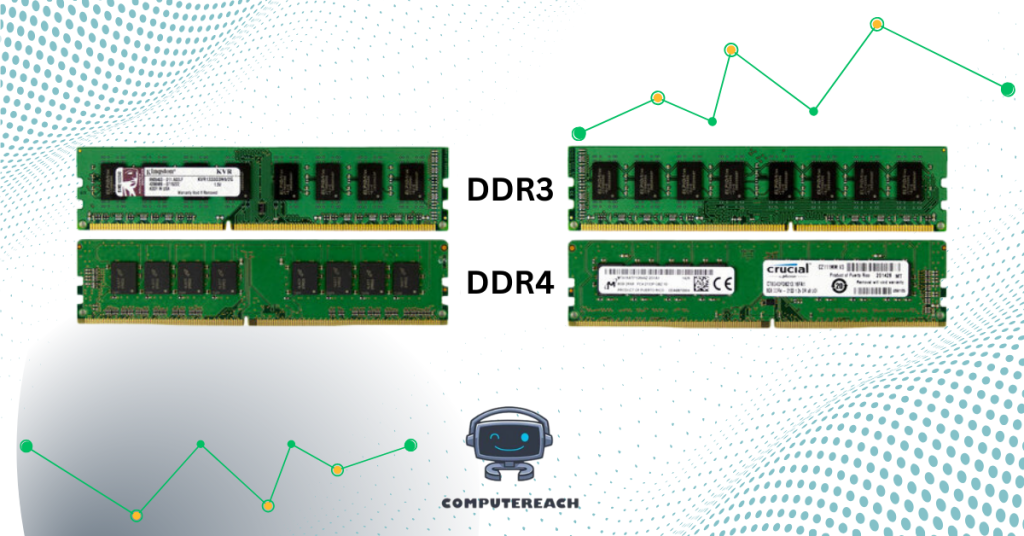A RAM module has a small rectangular shape like a business card, with black integrated circuit chips on one side and gold contact fingers on the other. These sticks are inserted vertically into DIMM slots on the motherboard to provide temporary memory for a computer’s CPU. This article will examine the physical appearance of RAM sticks, the different types like DDR4 and DDR3, and where exactly RAM is located and connected inside a PC or laptop. Key details will include the dimensions, materials, notch positions, chip packaging, and slot arrangements that characterize RAM modules and enable their vital role in computing performance.
Physical Appearance
A RAM stick has a small, rectangular shape like a business card, typically measuring 30-50mm long, 10-25mm wide, and 1-5mm thick. The circuit board is made of fiberglass laminated with copper traces, granting the greenish color. One side houses the black IC chips while the other has gold fingers to interface the stick with the motherboard.
The RAM chips have a smooth, glossy surface and square/rectangular shape. High-density chips allow fitting more memory capacity onto the small surface area. The chips are packaged either as TSOP (thin small-outline package), with leads extending from the short sides, or FBGA (fine-pitch ball grid array) which have solder balls on the underside.
On the backside, the edge fingers provide electrical contact to the motherboard. The fingers are coated in corrosion-resistant gold over nickel. Notches along one edge ensure the stick is oriented properly before insertion. High-performance RAM may have up to 240 pins.
Types of RAM
There are a few common types of RAM used in modern computers:
- DDR4 RAM is the latest generation, superseding DDR3. It operates at 1.2 volts and transfers data at up to 3200 MT/s bandwidth. The modules are recognized by their distinctive green PCBs. Notches along the center indicate capacity like 8GB or 16GB.
- DDR3 RAM marked improvements over DDR2, running at just 1.5 volts and clock speeds over 2000 MT/s. These sticks have blue PCBs and notches positioned differently compared to DDR4. Common capacities were 4GB to 16 GB.
- DDR2 RAM was very popular in the mid-2000s, identifiable by black PCBs. They transferred 1.8 volts at clock speeds of 800-1066 MT/s. Capacities typically ranged from 512MB to 8GB per module.
- SDRAM provided a leap over previous RAM types. Speeds of 100-200 MHz were common. These modules had silver or white PCBs with capacities between 16MB to 1GB.

Where RAM is Located in a Computer
Inside the computer case, the motherboard has between 2 to 8 RAM slots located around the CPU socket. Most mainstream boards have 4 DIMM slots spaced apart near the top edge. Server boards may have 18+ slots to maximize memory capacity.
The slots have metal arms that clamp down on the memory modules once fully inserted. This creates reliable electrical contact between the RAM stick’s fingers and the socket’s pins. For proper detection, the sticks must be fully depressed into the slot with an audible click.
Laptop RAM is integrated into the motherboard itself instead of using DIMM slots. Accessing it requires disassembling the laptop’s bottom case. The RAM chips are smaller and densely packed above the CPU. Unlike desktop RAM, laptop memory cannot be upgraded easily by the user.

